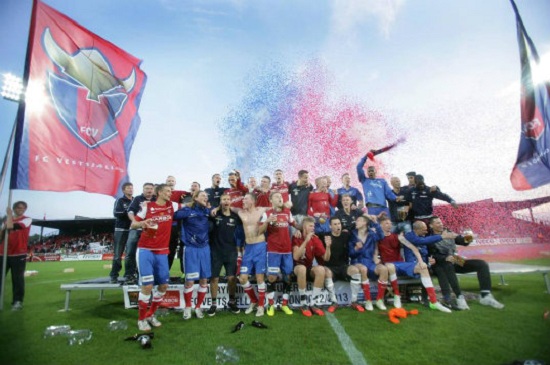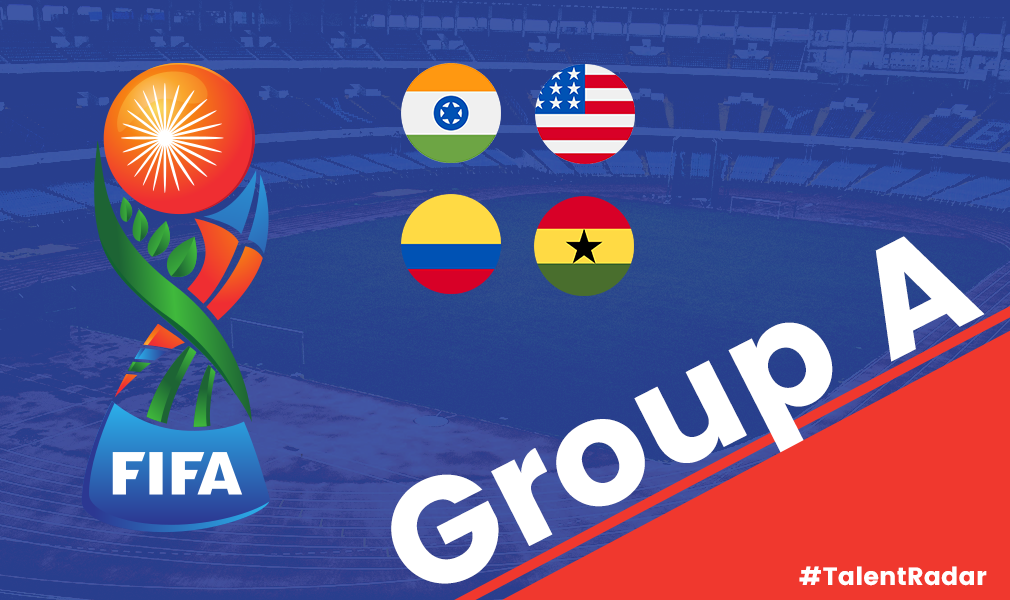 Anglian Holdings Ltd. have taken fantastic initiatives to develop the beautiful game in the country. Steps have been taken to attract European clubs to the country, while they have also used their professional resources to add some organisation to the Indian game. Although still in it’s early stages, Anglian’s initiative is bound to be a success and is one of the first meaningful steps taken towards developing the game in the country. CEO of Sports & Marketing, Anglian Holdings Ltd., Dhruv Ratra has answered some of our questions.
Anglian Holdings Ltd. have taken fantastic initiatives to develop the beautiful game in the country. Steps have been taken to attract European clubs to the country, while they have also used their professional resources to add some organisation to the Indian game. Although still in it’s early stages, Anglian’s initiative is bound to be a success and is one of the first meaningful steps taken towards developing the game in the country. CEO of Sports & Marketing, Anglian Holdings Ltd., Dhruv Ratra has answered some of our questions.
What is Anglian Football’s vision & mission?
 DR: Our goal is to build a global platform to connect and nurture players, coaches, management, businesses and fans with special focus on the Indian sub-continent. Through social media and along with our partner clubs and businesses, we have been able to actively engage with young talent across India and beyond. In doing so, we are helping pave the way for a resurgence of the game across the Indian sub-continent and beyond.
DR: Our goal is to build a global platform to connect and nurture players, coaches, management, businesses and fans with special focus on the Indian sub-continent. Through social media and along with our partner clubs and businesses, we have been able to actively engage with young talent across India and beyond. In doing so, we are helping pave the way for a resurgence of the game across the Indian sub-continent and beyond.
Anglian Holdings are a rare successful business venture that has taken a keen interest in developing the beautiful game in India, what convinced you’ll to take this initiative?
DR: What started off as a casual conversation with the owner of FC Vestsjælland turned into a full-blown business venture because of what we observed when we started studying the sporting landscape in India. The fact is that there are a lot of people who play and watch the sport throughout the sub-continent. If this passion and energy is handled correctly, there is no doubt that we can produce great players and teams. The US was in a similar position a couple of decades ago. Once they realized the numbers and passions of the girls and boys who played the sport from a young age, they were able to establish systems by which talent could be spotted and nurtured for the next level. The important thing is that India already has the raw materials in terms of numbers and enthusiasm. We are only lacking the operational expertise that will help shape and guide these boys and girls going forward. This is already changing today for the better, but there is much more that needs to be done.
The Indian Premier League has been a huge success in the cricket-loving nation, how feasible and beneficial would a similar franchise-style league be for football?
DR: There are pros and cons to the proposed franchise-style football league. While it will definitely attract the attention of the media (at least in the beginning) unless the experience is good the fans, media and corporates won’t flock to the show like they are doing for the IPL. From what I have read so far it does not seem like much emphasis has been placed on infrastructure and other operational matters which are critical to its success. Furthermore, while a franchise-based league might garner global attention in the beginning, unless a structure is put in place to assist in the long-term development of talent, it will do very little for raising the standard of the sport in India.
Over the past few seasons clubs like Barcelona, Inter Milan, Bayern Munich & Liverpool have ventured into India. How beneficial has this been and can this sort of influx grow further?
DR: I think the big clubs are trying to figure out their India strategy and it will take them a few years before they are able to develop a financially viable plan that goes beyond the selling of more jerseys and club merchandise. I have no doubt that India will attract more clubs and more programs in the years to come. Very recently Boca Juniors from Argentina announced the opening of a football school in India.
Lack of adequate sponsors have been detrimental to the sport, while the viewership remains embarrassingly low for the domestic game, what needs to be done?
DR: I think that instead of trying to reinvent the system and then change it every year or two, we need to learn from other countries such as the US and Japan, where the governing bodies and federations have struggled for over 20 years and are only now becoming established within their countries. It has taken the US a long time to get the MLS on a solid foundation from which they are now poised to grow and do better. The financial viability of the MLS is perhaps only second to the German Bundesliga. We need to learn to put in place a plan and execute against it for a good period of time before we can expect to start reaping rewards.
Developing youth football and assisting footballers to move into European Leagues is one of your aims, what measures are being taken and how long before we can see such initiatives materialise?
DR: We have already taken 3 players from Shillong Lajong FC for training in Denmark as well as a couple of UK-based PIOs and another player from Mumbai. In fact, Netan Sansara, a UK-based PIO was part of the FC Vestsjælland squad that recently gained promotion to the Danish Superliga and was awarded the Sports Achievement of the Year presented by Asian World as part of the inaugural British Indian Awards 2013. We are also coordinating an exchange of coaching and training expertise between FC Vestsjælland and Shillong Lajong FC for later this year.

What is the nature of the partnership Anglian Holdings has created with Denmark’s FC Vestsjaelland and Shillong Lajong?
 DR: In addition to providing capital investment, Anglian is advising both clubs on a variety of matters including marketing, financial, operational and administrative. In return, both clubs are helping Anglian achieve its larger goal of creating a pipeline that will help in the training of Indian talent as well as a platform from which the talent can eventually be launched.
DR: In addition to providing capital investment, Anglian is advising both clubs on a variety of matters including marketing, financial, operational and administrative. In return, both clubs are helping Anglian achieve its larger goal of creating a pipeline that will help in the training of Indian talent as well as a platform from which the talent can eventually be launched.
South East Asian countries have managed to develop their domestic football & national team much further than India, while they’ve also attracted big European sides. How has the sub-continent lagged behind?
DR: Considering the magnitude of challenges found in a place like India with its multiple languages, cultures and traditions, the problem faced by the governing body is significantly harder than those faced by smaller South East Asian countries. That said, the Indian women’s team is doing fairly well and is currently ranked 11th in the AFC ahead of most SE Asian countries.
Shillong Lajong, although a more recent side, have been more professional than the traditional Indian clubs. What have they done differently?

DR: Shillong Lajong has been around for 30 years and have learned a few things along the way. They have realized how to run a club within their means and do spend a lot of time and effort on youth development. This has provided home-grown talent that has enabled them to compete at the highest levels and against teams with significantly larger budgets. In addition they are doing a phenomenal job in their outreach and marketing programs that allow them to connect with their fans throughout the region.
We have a mission to be not only the best football website in the country, but in the World as well. What advice would you give us?
DR: Understand your “customer” and what their needs are. If you can solve a problem they are having you have done a great job and will be rewarded by a loyal following.






















































